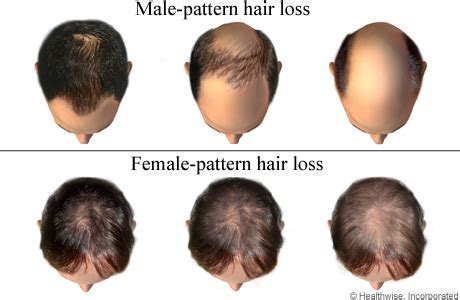Introduction:
Hair loss, a common concern affecting individuals worldwide, often manifests itself noticeably as hair loss on the top of the head. The onset of this condition can significantly impact one’s confidence and well-being. Understanding the causes, consequences, and potential remedies for hair loss on the top of the head is crucial for individuals facing this issue.

Prevalence and Impact:
- According to the American Hair Loss Association, approximately 50% of men experience hair thinning or balding by the age of 50.
- Of women, about 50% will face hair loss or thinning during their lifetime.
- Hair loss on the top of the head is particularly common, affecting both men and women.
Causes:
- Genetics (Androgenic Alopecia): Male and female pattern baldness is a common genetic condition that causes hair loss primarily on the top and crown of the head.
- Hormonal Changes: Fluctuations in hormone levels, particularly during pregnancy, menopause, or thyroid imbalances, can lead to temporary or permanent hair loss.
- Medical Conditions: Certain medical conditions, such as alopecia areata, trichotillomania, and lupus, can cause patchy hair loss or thinning.
- Medications and Treatments: Chemotherapy, radiation therapy, and some medications can result in hair loss as a side effect.
- Lifestyle Factors: Stress, poor nutrition, and insufficient sleep can contribute to hair loss or thinning.
Effects of Hair Loss on Top of Head:
- Psychological Distress: Hair loss can have a significant impact on mental health, leading to decreased self-esteem, social withdrawal, and anxiety.
- Social Stigma: In some cultures, hair loss is associated with aging, illness, or unprofessionalism, contributing to social stigma.
- Physical Effects: Hair plays a protective role against sun damage and provides warmth. Hair loss on the top of the head can expose the scalp to UV radiation and make it more susceptible to sunburn.
Treatments:
- Medications: Minoxidil and finasteride are FDA-approved medications used to treat hair loss. They promote hair regrowth and prevent further hair loss.
- Surgery: Hair transplantation involves removing individual hair follicles from the back or sides of the head and grafting them to the thinning areas on top.
- Alternative Therapies: Laser therapy, microneedling, and platelet-rich plasma injections have shown promising results in promoting hair growth.
- Lifestyle Modifications: Managing stress, adopting a healthy diet, and getting enough sleep can support overall hair health.
5 Key Benefits of Addressing Hair Loss on Top of Head:
- Improved Self-Esteem: Restoring hair volume and thickness can boost self-confidence and enhance overall well-being.
- Reduced Social Anxiety: Addressing hair loss can alleviate social anxiety and improve interpersonal relationships.
- Protection from Sun Damage: Hair regrowth can provide protection from UV radiation, reducing the risk of scalp damage and skin cancer.
- Preservation of Style: By preventing further hair loss and promoting regrowth, individuals can maintain their desired hairstyles and avoid the need for drastic changes.
- Hair Versatility: Regaining hair volume allows for greater hair styling options, giving individuals more control over their appearance.
Common Mistakes to Avoid When Dealing with Hair Loss on Top of Head:
- Ignoring the Problem: Hair loss should not be ignored as it can worsen over time. Seek professional advice to determine the underlying cause and appropriate treatment options.
- Overusing Styling Products: Excessive use of hair gels, sprays, and dyes can damage hair and exacerbate hair loss.
- Unrealistic Expectations: Hair regrowth takes time and varies from person to person. Be patient and follow the prescribed treatment plan consistently.
- Lack of Sun Protection: Hair loss exposes the scalp to sunlight. Protect the scalp from UV radiation by wearing hats or using sunscreen.
- Using Aggressive Hair Treatments: Avoid harsh shampoos, conditioners, or chemical treatments that can weaken and damage hair.
Frequently Asked Questions (FAQs) about Hair Loss on Top of Head:
-
What is the most common cause of hair loss on top of head?
– Androgenic alopecia (male and female pattern baldness) is the most prevalent cause of hair loss on the top of the head. -
Can stress cause hair loss on top of head?
– Yes, chronic stress can contribute to hair thinning or shedding, including on the top of the head. -
What are the early signs of hair loss on top of head?
– Gradual thinning, increased shedding, and a widening part are common early indicators of hair loss on the top of the head. -
Is hair loss on top of head permanent?
– In some cases, hair loss on the top of head can be permanent, especially if it is caused by genetic factors. However, there are treatments available to slow down or prevent further hair loss and promote regrowth. -
When should I see a doctor about hair loss on top of head?
– See a dermatologist if you experience sudden or excessive hair loss, patchy hair loss, or if hair loss is accompanied by other symptoms such as itching, redness, or pain. -
What can I do to prevent hair loss on top of head?
– Manage stress, maintain a healthy diet, get enough sleep, avoid harsh hair treatments, and protect the scalp from sun damage to help prevent hair loss. -
Are there any non-surgical treatments for hair loss on top of head?
– Yes, non-surgical treatments such as minoxidil, finasteride, laser therapy, and microneedling can promote hair regrowth and prevent further hair loss. -
How effective are hair transplantation surgeries for hair loss on top of head?
– Hair transplantation surgeries can be effective in restoring hair growth on the top of the head, but individual results may vary.
